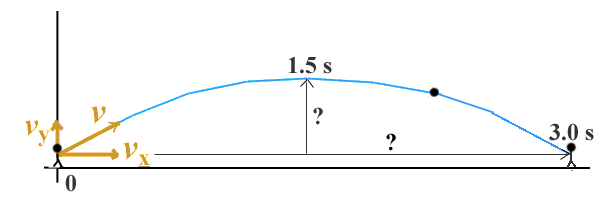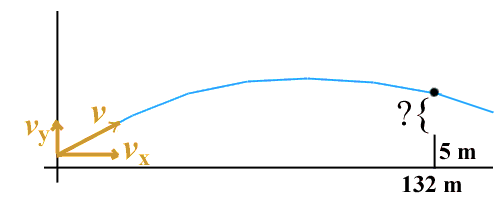
4: In total, the taxi moves 7 blocks north and 5 east. Ask Pythagoras for the diagonal of the rectangle.
5,6: Use components. The x-comp of A is +3, the y-comp is 0.
The x-comp of B is -2sqrt(3) (=-4cos30), the y-comp is +2 (=4sin30). Add them.
The resultant vector has an x-comp = 3-2sqrt(3), and y-comp = +2.
Use Pythagoras to get the magnitude, and x/y=tan(a) to get the angle.
You may have to add 90deg; make a little sketch:

7,8: These two problems use the independance of horizontal and
vertical movements. There is no horizontal acceleration in free flight,
and the vertical acceleration is always g = -9.8 m/s2.

The horizontal velocity component is 29.4cos30, so the distance traveled is
3*29.4cos30.
The time to the maximum height is t =1.5 s, and the distance the ball falls in the
last half of the flight is 0.5*gt2.
10: The initial vertical velocity is zero.
The time interval is the free-fall time to drop 10 cm =0.1 m (find using y =0.1
=0.5gt2).
The required velocity is then the horizontal distance / time interval.
11. This is a "sum of vectors" problem. Set up the coordinate system E-W, N-S. The components of the plane vector in still air are vpE =500 mph, vpN =0 mph. The components of the wind vector which is carrying the plane are vwE =104 mph (120*cos30), vwN =60 mph (120*sin30). Add these components to get the resultant components: vp+wE =604, vp+wN =60. From these components one can recover the magnitude (Pythagoras) and the angle (sin or tangent).
12. This is also a vector addition problem, but now the vectors are all in a line
so we don't have to worry about the "cross-river" direction.
The boat moves downstream at 10+2 =12 m/s, and upstream at 10-2 =8 m/s
relative to the land. So the time to go 1000 m downstream is 1000/12 s, and
the time to go 1000 m upstream is 1000/8 s.
13. It is always a good idea to draw a diagram to fix the question and
the "knowns".

Also remember the horizontal motion here has no
acceleration, so an appropriate formula will be
vx=Dx/Dt.
We will use this formula to determine the time interval between bat
and fence:
Dt =132/vx =132/(44*cos30).
The question asks about a height at the point in the path above the fence.
Heights can best be found with the formula
y =y0+vy0t+0.5gt2.
Here y0 =1 m, and vy0 =22 m/s (44*sin30).
Using the time interval from the previous step, we can calculate the height
at the fence, =18.4 m, 13.4 m above the top of the fence.